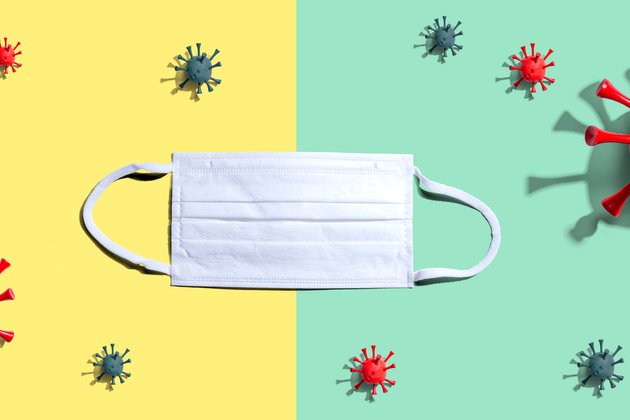What’s the difference between flu and COVID-19?
In addition to COVID-19 cases, flu cases began to spread rapidly during the winter season. The symptoms of COVID-19, which once differed from the flu, are now very difficult to distinguish from the flu. Anadolu Health Center Infectious Diseases Specialist Assoc. Prof. said that the symptoms are almost the same and that it is necessary to get tested to distinguish between flu and COVID-19. Dr. Elif Hakko points out that it is necessary to continue to take precautions to avoid catching both diseases, that the rules of mask, distance and hygiene should not be relaxed, and that one should not be in closed and crowded areas. Assoc. Prof. stated that Omicron is much more contagious than other COVID-19 variants and is currently very common, especially in children and young people. Dr. Elif Hakko said, “Therefore, COVID-19 is now transmitted to families much more easily. Being vaccinated or having previously had COVID-19 does not prevent you from getting sick, but it helps to relieve the disease mildly. The fact that Omicron has a milder course for now may be due to the fact that it is more common in children and young people, or due to the effect of vaccines. However, immunocompromised people, those with chronic diseases, and older age groups are still at risk and have a high risk of severe illness with Omicron. “It is wrong to relax and relax the measures just because it is mild, it may create a serious picture,” he said. Assoc. Dr. Elif Hakko gave important information on the subject…

There is no longer much difference between the symptoms of COVID-19 and flu, and testing is required to distinguish the two diseases. Common symptoms of both viruses are fever, cough, shortness of breath, fatigue, sore throat, runny or stuffy nose, joint pain and headache. At one time, COVID-19, unlike the flu, had symptoms such as diarrhea, nausea, vomiting, loss of smell and taste, impaired concentration and confusion, but these are now very rare, especially in vaccinated people. Therefore, instead of diagnosing at home, it is important to take a PCR test and clarify which disease you have…
Due to the Omicron variant, masks and protective measures must be followed more strictly
Flu viruses, like COVID-19, are transmitted through droplets. These droplets can be transmitted through droplets from people’s mouths and noses, that is, through sneezing, coughing, blowing their nose or even talking. The Omicron variant can be transmitted much more easily, especially if 3 months have passed since the last dose of vaccine. Therefore, we must comply with mask and distance rules more strictly. We should be careful not to be in closed environments and not come into contact with anyone without a mask. When it is identified, we should not forget to get vaccinated. The only thing that will save us from this epidemic is the vaccine.
Assoc. Dr. Elif Hakko made the following suggestions to protect against both flu viruses and COVID-19 and prevent their spread:
- When you go out of the house, wear your mask to cover your nose and chin.
- Wash hands frequently.
- Maintain social distance in every environment, keep at least 3-4 steps away from people.
- Do not touch your mouth, face, eyes and nose with your hands.
- Avoid being in crowded and closed environments as much as possible, stay away from sick people and avoid contact.
- Regularly disinfect the surfaces you come into contact with.
- Do not sneeze or cough into your hand. Sneeze or cough into your arm or a tissue.
- If you are sick, stay at home.



